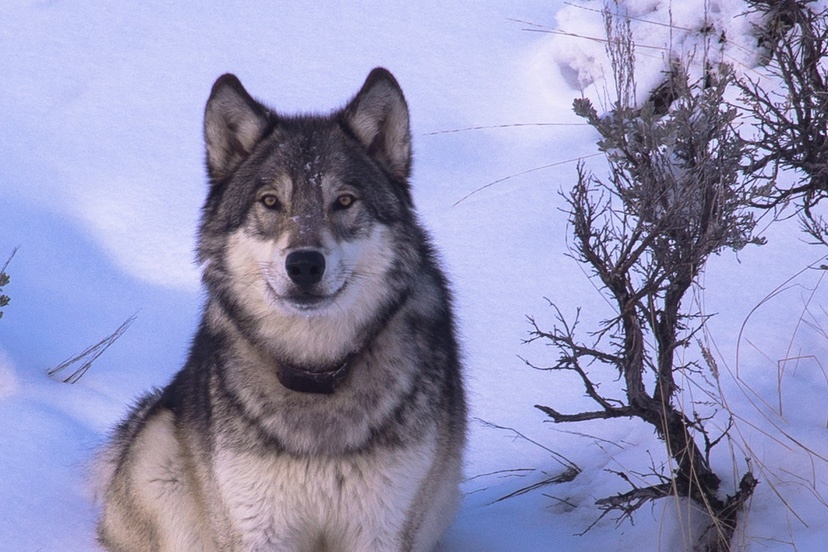By Brian Sweeney
This week, 10 conservation groups challenged the U.S. Fish and Wildlife Service (“the Service”) over its failure to list western wolves under the Endangered Species Act (non-stamped complaint here, stamped complaint will be posted here when available).
The Service’s “not warranted” finding ignores obvious threats to the species, runs contrary to the best available science, and relies on flawed population models for its determination.
“The Service’s finding seems to give the green light for states hostile to wolves to follow suit with Idaho, Montana, and Wyoming’s aggressive killing regimes if they are eventually delisted and transferred to state management West wide,” said Kelly Nokes, an attorney with the Western Environmental Law Center representing the groups. “But wolves have yet to recover across vast portions of the West, and they exist in only small populations in the West Coast and Colorado habitats they are slowly re-inhabiting. This legal challenge asks only for the protections needed for this iconic species to be rightfully restored across the West’s wild landscapes—protections that some states have shown only the Endangered Species Act can really provide.”
In its “not warranted” finding, the Service confirmed that a western U.S. distinct population segment (DPS) is a valid entity for listing consideration, but cites a deeply flawed modeling exercise to conclude there is no risk of extinction for wolves in the West either now or in the foreseeable future.
“The current killing regimes in Idaho, Montana, and Wyoming put wolves at obvious risk of extinction in the foreseeable future, and this core population is key to wolf survival in the West,” said Erik Molvar, a wildlife biologist and executive director of Western Watersheds Project. “The U.S. Fish and Wildlife Service is playing politics, pretending that the anti-wolf agendas of state governments constitute adequate conservation regulations and that the small and vulnerable condition of fledgling wolf populations elsewhere in the West somehow protect the species from extinction.”
A 2023 study by Dr. Robert Crabtree and others found the Montana state population model was badly biased, overestimating total wolf populations by as much as 50%. These researchers found this flawed population model constitutes a “precariously misleading situation for decision-makers that threatens wolf populations.” In an earlier analysis, Dr. Scott Creel found that data used in both the Idaho and Montana population models violate the assumptions of the models, meaning population estimations generated by the models are unreliable. Yet the Service relied on these flawed population estimates to conclude wolves in the West are not at risk of extinction.
“Idaho, Montana and Wyoming have become the poster children for what happens when politics trumps science,” said Brooks Fahy, executive director of Predator Defense. “Science shows us the importance of intact pack structures, the vital role each family member plays. But these states are destroying wolf families in the Northern Rockies and cruelly driving them to functional extinction via bounties, wanton shooting, trapping, snaring, even running over them with snowmobiles. They have clearly demonstrated they are incapable of managing wolves, only of killing them.”
A second 2023 study by wolf geneticist Dr. Bridgett vonHoldt and others found wolf populations in the northern Rockies are losing genetic variability and below genetic minimum viable population levels at today’s populations. At present, wolf populations in California and the Cascade Range of western Oregon and Washington are far below minimum viable population thresholds, and Utah, Nevada, and northern Arizona, all of which have historic gray wolf habitat, have no wolves at all.
“It’s deeply concerning to hear that the U.S. Fish and Wildlife Service has decided not to list gray wolves… under the Endangered Species Act, while ignoring traditional sacred religious beliefs of Native Americans,” said Roger Dobson with Protect The Wolves. “It’s important to protect these intelligent and family-oriented predators to maintain ecosystem health, and to protect Native Americans’ ‘sacred religious beliefs.’ Hopefully, the Service will take steps to address these issues with its determination before it’s too late for these native wildlife species, and before violating Indigenous religious beliefs.”
“The U.S. Fish and Wildlife Service committed to ‘immediately pursue’ emergency Endangered Species Act listing of wolves if any state allowed unlimited and unregulated killing of wolves, which Idaho has done since July 1, 2021,” said Suzanne Asha Stone, director of the Idaho-based International Wildlife Coexistence Network. “The Service has failed to honor its delisting plan just as the state of Idaho has failed to manage wolves ‘like mountain lions and black bears’ as they publicly swore to do before wolf delisting. Aerial gunning of animals, killing pups for bounties, and widespread traps and deadly snares have no place in responsible wildlife management today.”
Brian Sweeney is Communications Director for Western Environmental Law Center.

